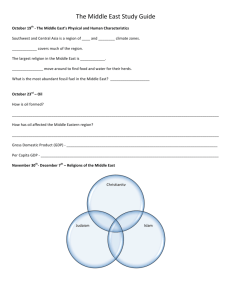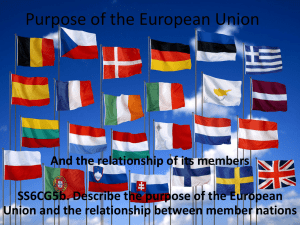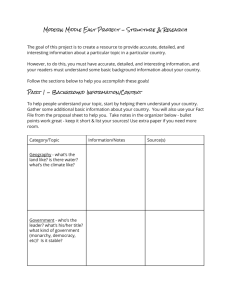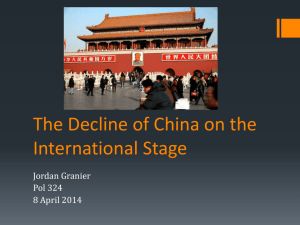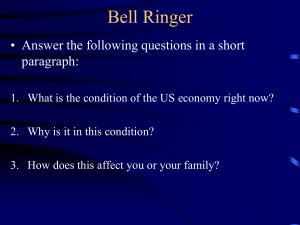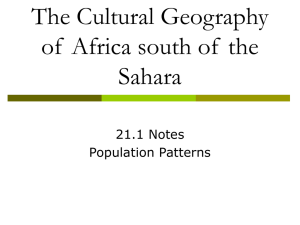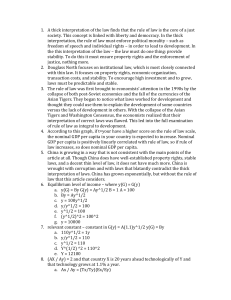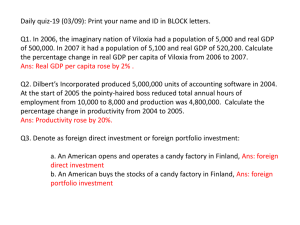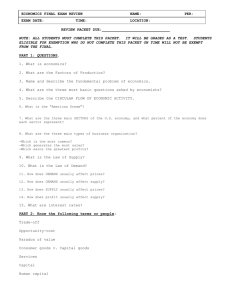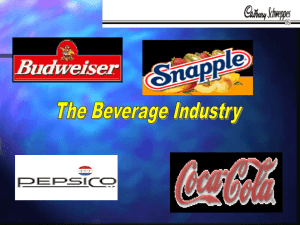8 Discuss the main features of the American economy
advertisement
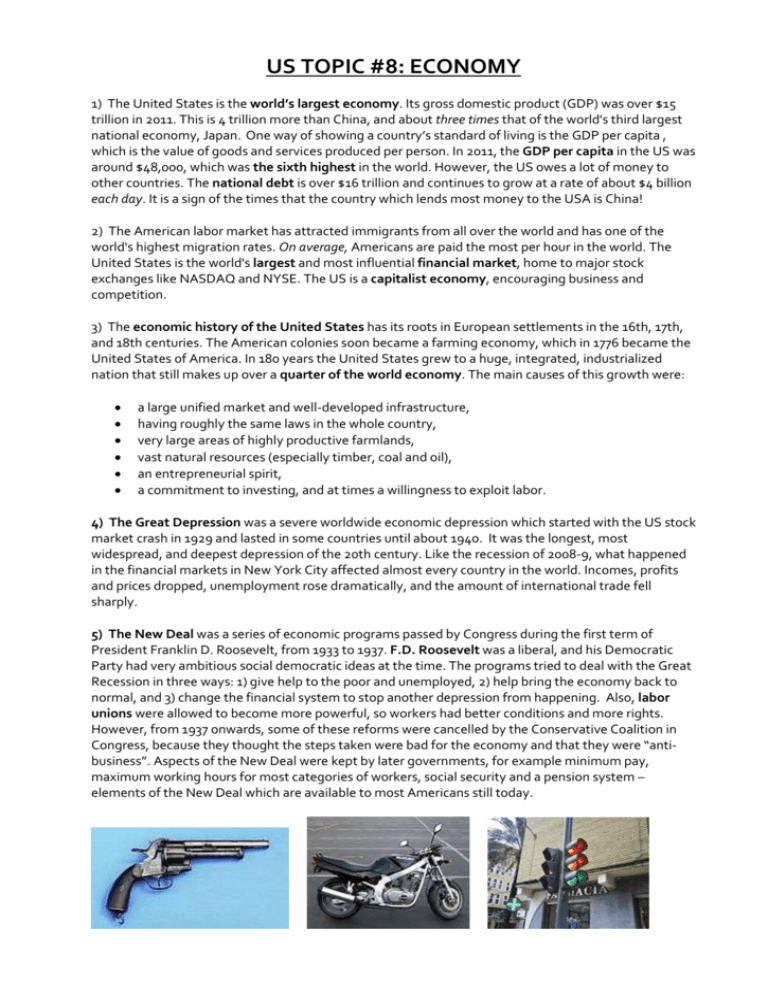
US TOPIC #8: ECONOMY 1) The United States is the world’s largest economy. Its gross domestic product (GDP) was over $15 trillion in 2011. This is 4 trillion more than China, and about three times that of the world's third largest national economy, Japan. One way of showing a country’s standard of living is the GDP per capita , which is the value of goods and services produced per person. In 2011, the GDP per capita in the US was around $48,000, which was the sixth highest in the world. However, the US owes a lot of money to other countries. The national debt is over $16 trillion and continues to grow at a rate of about $4 billion each day. It is a sign of the times that the country which lends most money to the USA is China! 2) The American labor market has attracted immigrants from all over the world and has one of the world's highest migration rates. On average, Americans are paid the most per hour in the world. The United States is the world's largest and most influential financial market, home to major stock exchanges like NASDAQ and NYSE. The US is a capitalist economy, encouraging business and competition. 3) The economic history of the United States has its roots in European settlements in the 16th, 17th, and 18th centuries. The American colonies soon became a farming economy, which in 1776 became the United States of America. In 180 years the United States grew to a huge, integrated, industrialized nation that still makes up over a quarter of the world economy. The main causes of this growth were: a large unified market and well-developed infrastructure, having roughly the same laws in the whole country, very large areas of highly productive farmlands, vast natural resources (especially timber, coal and oil), an entrepreneurial spirit, a commitment to investing, and at times a willingness to exploit labor. 4) The Great Depression was a severe worldwide economic depression which started with the US stock market crash in 1929 and lasted in some countries until about 1940. It was the longest, most widespread, and deepest depression of the 20th century. Like the recession of 2008-9, what happened in the financial markets in New York City affected almost every country in the world. Incomes, profits and prices dropped, unemployment rose dramatically, and the amount of international trade fell sharply. 5) The New Deal was a series of economic programs passed by Congress during the first term of President Franklin D. Roosevelt, from 1933 to 1937. F.D. Roosevelt was a liberal, and his Democratic Party had very ambitious social democratic ideas at the time. The programs tried to deal with the Great Recession in three ways: 1) give help to the poor and unemployed, 2) help bring the economy back to normal, and 3) change the financial system to stop another depression from happening. Also, labor unions were allowed to become more powerful, so workers had better conditions and more rights. However, from 1937 onwards, some of these reforms were cancelled by the Conservative Coalition in Congress, because they thought the steps taken were bad for the economy and that they were “antibusiness”. Aspects of the New Deal were kept by later governments, for example minimum pay, maximum working hours for most categories of workers, social security and a pension system – elements of the New Deal which are available to most Americans still today. 6) The U.S. economy grew strongly from 1946 to 1973, with average household income rising by no less than 55%. The “swinging sixties” was the period of fastest growth. However, since 1973, the economy has grown more slowly. Today, the biggest problem is debt – as well as the national debt problem, people have borrowed too much money and find it hard to pay it back. Many Americans love shopping, and in the first years of the 21st century they spent more than they could afford. At the moment there is also high unemployment. However, conditions for most people in the USA are better than in most countries, and this continues to make it an attractive place to migrate to from all over the world. 30 AMERICAN INVENTIONS: 1. 2. 3. 4. 5. 6. 7. 8. 9. 10. 11. 12. 13. 14. 15. 16. 17. 18. 19. MAIL ORDER (Benjamin Franklin, 1744) CRACKER (1792) – first used at sea COFFEE PERCOLATOR (1806) DENTAL FLOSS (1815) – for cleaning teeth ELECTRIC DOORBELL (1831) REVOLVER (Samuel Colt, 1836) POTATO CHIPS (George Crum, chef, 1853) ROLLED TOILET PAPER (1857) CAN OPENER (1858) –first used in the army VACUUM CLEANER (1860) – first called “carpet sweeper” POSTCARD (1861) BREAKFAST CEREAL (1863) – the first one, “Granula”, was unpopular because it had to be soaked overnight in order to be soft enough to eat! MOTORCYCLE (Sylvester Howard Roper, 1867) PAPER BAG (Margaret E Knight, 1868) CHEWING GUM (Thomas Adams, 1870) JEANS, made from denim ELECTRIC FAN (1892) REMOTE CONTROL (1898) TEA BAG (1903) – bags were first made of silk 20. FAST FOOD RESTAURANT (1912) – the “Automat” in New York City was the first to open 21. ELECTRIC TRAFFIC LIGHT (1912) – first only red/green, invented by Utah policeman Lester Wire 22. SUPERMARKET (Clarence Saunders, 1916) – the first self-service store was in Memphis 23. SUNGLASSES (Sam Foster, 1929) 24. ELECTRIC GUITAR (Beauchamp/Rickenbacker, 1931) 25. MOBILE PHONE (1947) “Father of the cell phone”, Martin Cooper, invented the first handheld cell phone in 1973 26. BARCODE (1952) 27. COMPACT DISC (James Russell, 1965) – available commercially from 1980 28. EMAIL (Ray Tomlinson, 1971). Tomlinson also invented the @ sign 29. DIGITAL VIDEO RECORDER (DVR) (1997) 30. ARTIFICIAL LIVER (Dr K Matsumura, 2001) NAME______________________________________ CLASS __________ QUESTIONS ON USA TOPIC #8 (One mark per answer unless otherwise stated) 1. One reason for the success of the US economy is ”an entrepreneurial spirit”. Use your own words to describe what is meant by this. ___________________________________________________________________________ ___________________________________________________________________________ 2. Which decade of the 20th century was the darkest period for the US economy? __________ 3. Which Democratic president is associated with “The New Deal”? ____________________ 4. Name two features of American life today which originate from The New Deal (2 marks) 1)________________________________________________________________________ 2)________________________________________________________________________ 5. What is the American name for organisations which protect workers? ________________ 6. How much money does the USA currently owe other countries? $_________________ 7. What are NYSE and NASDAQ? ______________________________________________ 8. GDP per capita is a way of showing the average standard of living in a country. Find out the current GDP per capita for these countries: (3 marks) a) USA: approximately $_________________ b) UK: approximately $______________ c) Hungary: approximately $____________ 9. In which decade of the 20th century did the American economy grow most quickly? In the 1950s, 1960s or 1970s? _______________________ 10. Choose 3 American inventions and say why, in your opinion, they were good inventions: (3 marks) a) ___________________________________________________________________________ _____________________________________________________________________________ b) ___________________________________________________________________________ _____________________________________________________________________________ c) ___________________________________________________________________________ _____________________________________________________________________________
